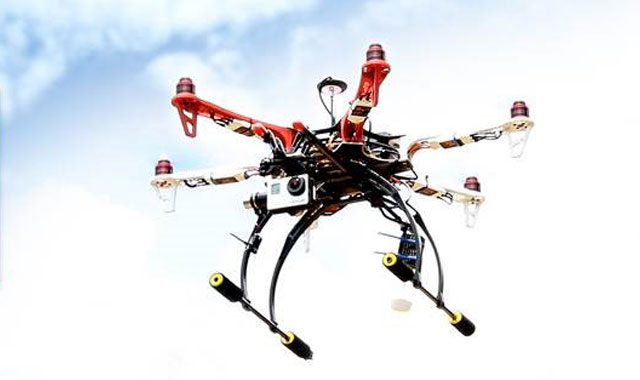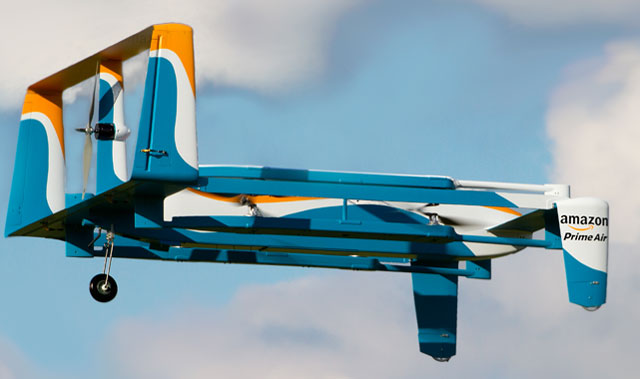
Ever since a 2010 Las Vegas electronics exhibition, drones have entered the mainstream. There’s been a swift change in perception from drones being military weapons, to cool toys, with some commercial application.
It’s the commercial application that could work well in Africa.
Hobbyist drones are a big business. Some can cost as much as R25 000 (or more) and the market is flooded with cheaper models costing less than R7 500. It’s the perfect toy for the geeky adult with some disposable income.
But there’s loads of noise from companies such as Amazon, UPS and others in the logistics and transportation sector that want to use drones for deliveries. While some of these companies are taking steps to develop these services – Amazon, for instance, is trialling drone deliveries in the UK – there are still uncertainties about the practicality of it.
A truck can deliver 150 packages on a day’s run, meaning that 150 packages get delivered each time the truck leaves its base. A drone, on the other hand, can only deliver one package on each run.
A truck can travel as far as it needs to, while a drone can only fly 30 minutes before it must return to base to have its battery recharged. This makes drone-based deliveries very expensive: a network of warehouses would have to be set up as the underlying infrastructure of drone deliveries.
Even if the economics eventually work, a 30-minute delivery as opposed to taking two days, doesn’t really solve any fundamental problems faced in the developed nations. All it does is adds marketing hype for the companies proposing these ideas, and maybe a bit of competitive advantage.
Commercial applications
Thankfully, there are many other applications for drones beyond deliveries. These include surveying land and mining assets, for example. They can be used to take videos, do thermal scanning and even conduct 3D mapping.
Most of these are small, niche businesses — and not just because there is a limited demand for these services. Regulations in each region mean limited areas where the operators can conduct their business.
The rapid advances in drone technology have added it to the ever-increasing list of technologies governments are yet to “review” and assign regulations to.
The regulation of drones is mixed, with some nations having no rules at all and those that do taking quite divergent approaches. Some nations allow autonomous drones, some require them to be piloted, while some require drone insurance. Others only permit drones to be flown near roads.

The different regulations rapidly add to how niche drone businesses are forced to be, but that’s perhaps not a problem in Africa.
As transportation devices, drones are fundamentally best suited to rural areas and nations that lack infrastructure. A drone network could be an incredible addition to the infrastructure of many African nations.
Delivering goods, including medicine, to rural areas, surveying and security — these applications have the potential to become big businesses in Africa, and there’s evidence it’s already starting.
Mercedes-Benz’s Matternet trialled a drone based medical supply network in Lesotho — it cost US$1m to set up and it could deliver blood samples to hospitals fast for HIV analysis at the average price of $0,21/delivery.
There’s no doubt a network like this can also deliver essential light goods to rural parts of the country — from spare parts for mining plants, to medicine in rural areas. But there’s only so many of these situations generally, and especially in a small country such as Lesotho.
(Lack of) regulations
For drones to achieve their full potential and to help solve some of the fundamental challenges in Africa, companies developing such solutions will need to become multinational businesses — to make up for the research and development costs, as well as to secure funding from investors.
A multinational approach is especially necessary considering how niche some of the applications really are and the high fixed costs involved in providing many of these solutions, such as setting up a drone network.
The biggest obstacle for a multinational drone business in Africa is regulation. Most countries in Africa have no drone regulations and little is known about how future regulations will evolve. That scares away investors.
Yet there really are many practical and scalable potential drone applications in Africa. To open the doors for a mass-scale commercial drone industry, the continent should combine efforts to develop streamlined drone regulations. This will remove uncertainty and encourage more companies to invest.
- Bertrams Lukstins is a researcher, consultant and entrepreneur. Visit his personal website

